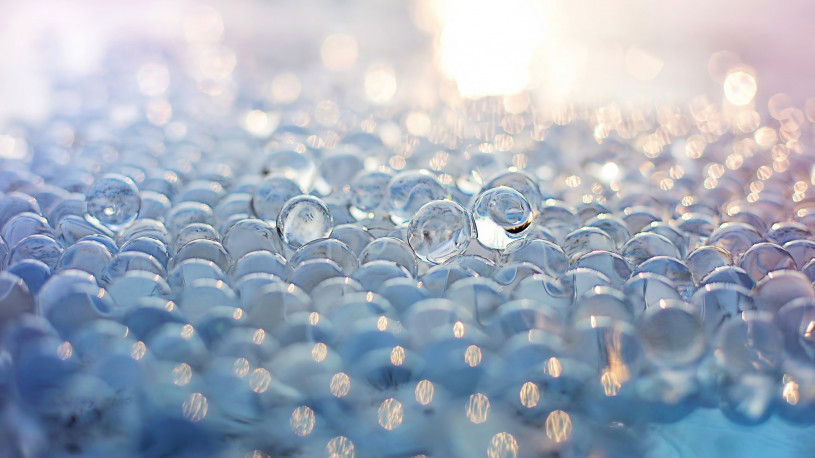-
Microspheres Making Lighter Cars
 Continue Reading
Continue ReadingOne of the key advantages of microspheres is their low density. It is therefore a natural connection to use them in industries where volume and strength is desired and weight is not.
One such market is the automobile industry, that has hit upon the potential that microspheres hold to be both bulky and yet lightweight. For car makers, having a large volume to mass ratio saves money. Which is why in July 2016, the new Chevrolet Corvette used a composite for making body panels that included glass microspheres.
As the industry journal, Plastic News, reported at the time, “Continental Structural Plastics Inc. has developed a sheet molding compound in which glass microspheres replace calcium carbonate filler and shave 20 pounds [9kg] off the sports car’s Stingray Coupe model weight.” Adding that, “the trick to the SMC formulation is getting the microspheres to stick better to the thermoset polyester matrix. CSP has developed a silane treatment for the beads so that one end of the silane molecule sticks to the glass microsphere and other to the resin.”
Probir Guha, Vice President of manufacturer Continental Structural Plastics Inc, explained how, “the typical SMC formula for this type of vehicle application comprises 20 percent by volume of glass fiber reinforcement, 35 percent resin and 45 percent filler, usually calcium carbonate.”
“This new SMC is cost competitive with aluminum,” noted Guha, adding that, “tooling costs are [also] low. For a production run of fewer than 150,000 vehicles, such composites can lower tooling costs by as much as 50 to 70 percent versus steel or aluminum.”
Given the rising cost of fuel, any weight saving that can be made in a vehicle not only saves money but also increases speed and is better for the environment. In an industry with a bad ‘green-image’ automobile manufacturers may well be looking to microspheres as a solution to vehicle efficiency more and more in the future.
Photo credit: General Motors
-
Microspheres for Counterfeit-Proof Ink
 Continue Reading
Continue ReadingIn an insightful feature in the August 2016 edition of Ceramics magazine [pdf], the American Ceramics Society outlined an excting, future use for microspheres. More specifically, they explained how the use of porous-wall, hollow glass microspheres (PWHGM) had been adopted for the manufacture of counterfeit-proof ink.
The International Chamber of Commerce estimates that the global market for counterfeit goods reached a staggering $1.77 trillion in 2015. They also predict that this figure is set to grow, as laser printing technology becomes more advanced.
Whilst today’s counterfeit techniques include holograms, watermarks, barcodes, and radio frequency identification, as well as covert measures such as digital watermarks, the development of inks that could react in a prescribed way when tampered with, would add an additional layer of security to a wide range of documents and digitally printed products.
As the journal explains, the microspheres can be loaded with, “various payloads into the same ink formulation [and then] by controlling wall thickness or sphere diameter or [by] use of external coatings or treatments… [the] spheres can be designed to burst under specific stimuli (e.g., mechanical abrasion or thermal fluctuations), releasing the internal payload for easy detection.”
Researchers believe that these functions would mean that the ink would react to, “outside stimuli based on demand”. For example, the ink could change colour when exposed to heat, light, magnetism, electricity or specified chemicals. This could form the basis for anti-tamper and anti-counterfeiting devices.
Current methods of creating anti-tamper ink are complex, “In traditional [security] ink development, incorporation of a new functional material requires careful identification of a proper solvent, capping agent, and other additives to control dispersion, stability, and rheological properties of the ink. Use of PWHGMs as a carrier, however, minimizes these steps because of the ubiquitous nature of the microspheres’ morphology, characteristics, and glass surface chemistry. Thus, a variety of functional security inks may be developed and deployed within a single technology envelope.”
Testing has already shown that microspheres are a suitable ingredient for ink when applied with jet printers, and research is ongoing to find if, “other technologies, such as spin coating, or automated fluid dispensing systems, may prove to be better suited for fabrication of novel anticounterfeiting features that utilize PWHGM composites.”
There are many reasons why the planet needs next generation anti-counterfeit measures; home printing technology has improved drastically in recent years, giving way to an increase in the manufacture of forged documents. Copying of trademark and branded products is epidemic, and the need for more secure personal documents to combat illegal immigration, cybercrime and terrorism is a global problem. If microsphere ink proves to be one of those measures, then the demand for high specification glass microsphere manufacturing is sure to grow.
Photo credit: International Journal of Applied Glass Science
-
Microspheres as a Treatment for Weak Bones
 Continue Reading
Continue ReadingFor many years, pharmacists have been theorising, and recently putting into practical use, the idea of using microspheres as a method of drug dispensing. But now chemists from the University of Nottingham have taken the idea to the next level and are exploring the possibility of using microspheres as a delivery method for bone repair.
As the University’s website explains, the new procedure would be a, “targeted therapy [that] could offer a quick, easy and minimally-invasive treatment that is injected into areas considered to be at high-risk of fracture to promote bone regeneration. [With] the experimental materials consisting of porous microspheres produced from calcium phosphates – a key component in bones – to be filled with stem cells extracted from the patient.”
As the MIDOS project organizers state, “Our Aim is to scale-up the development of these novel porous calcium phosphate glass microspheres which would ‘repair’ the bone tissue (via release of CaP ions from the resorbing microspheres) and ‘regenerate’ bone tissue via the stem cells incorporated within.”
With the National Osteoporosis Society calculating that in the UK alone, “around 3 million people have the disease,” then any progress made towards reversing the condition is sure to be useful.
As Dr Ahmed, from the Faculty of Engineering at The University of Nottingham, said, “If we could strengthen these peoples bone before they suffered from fractures, using a simple injection procedure, it would save people the pain and trauma of broken bones and associated consequences such as surgery and loss of independence.”
The development of this new treatment is one of a number of uses that microspheres now have in the pharmaceutical industry. They are being used as a drug delivery system for a great many illnesses, but this is the first time they are being used as a body building system to help reconstruct old tissue.
With the increasing use of microspheres in such a wide range of products and growing industries, from battery manufacture to plastic sheeting, to modern car composites to pharmaceuticals, it is clear that the microsphere market will be one to follow closely. Their weight to volume ratio, strength, the ability to add chemicals inside them, or make their frames porous, or their sheer versatility is sure to make them a highly sought after commodity for years to come.
Photo credit: MIDOS project
Photo credit: Pinterest
